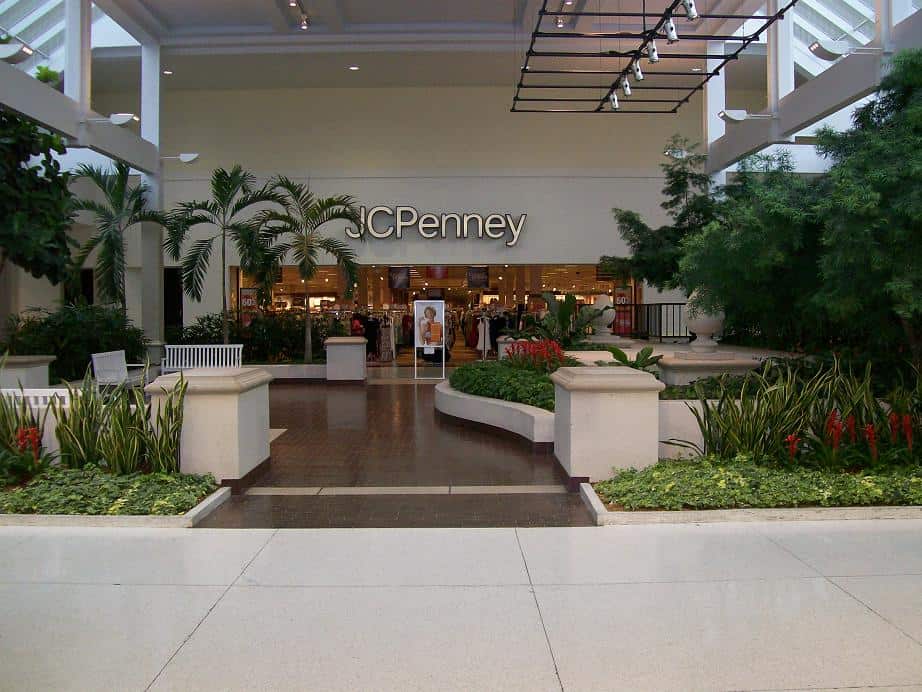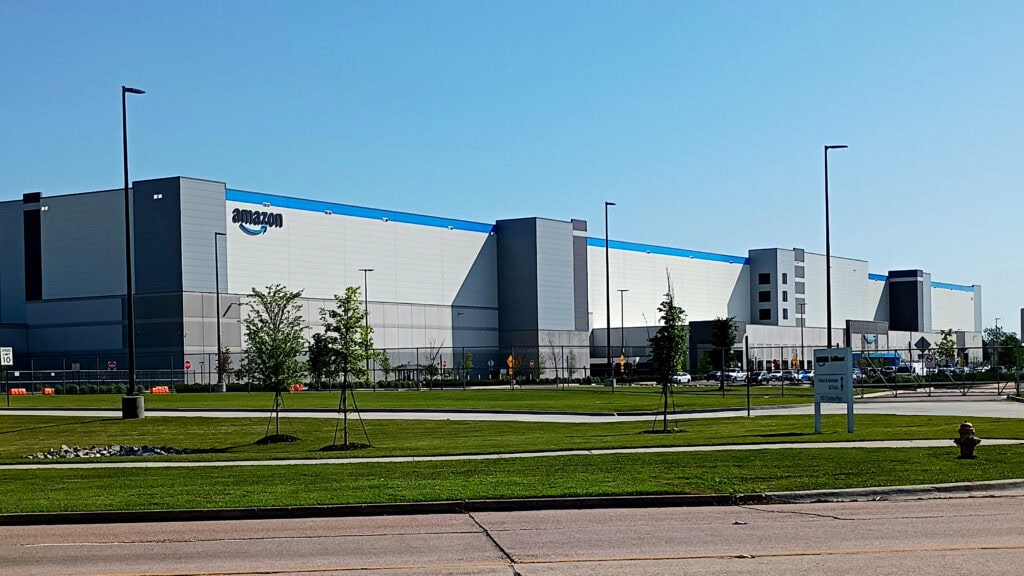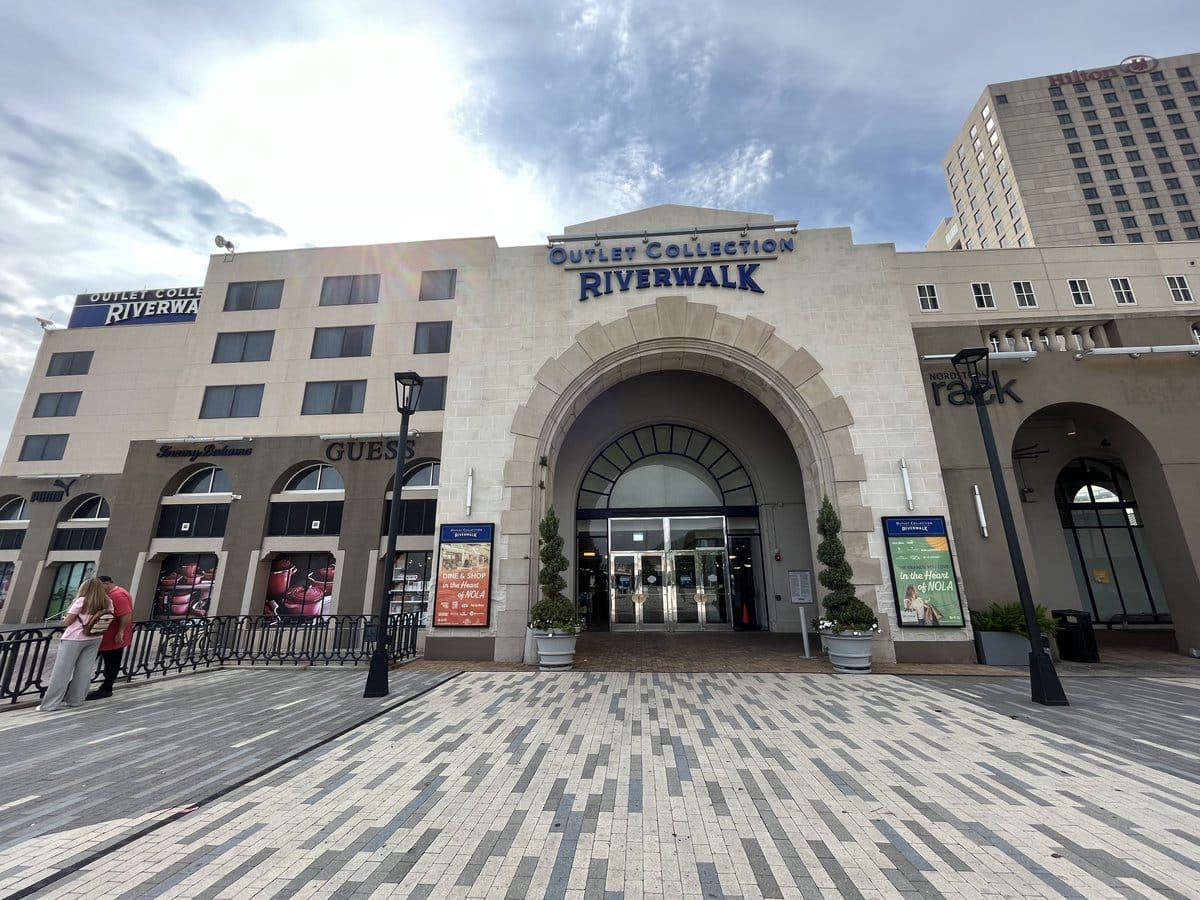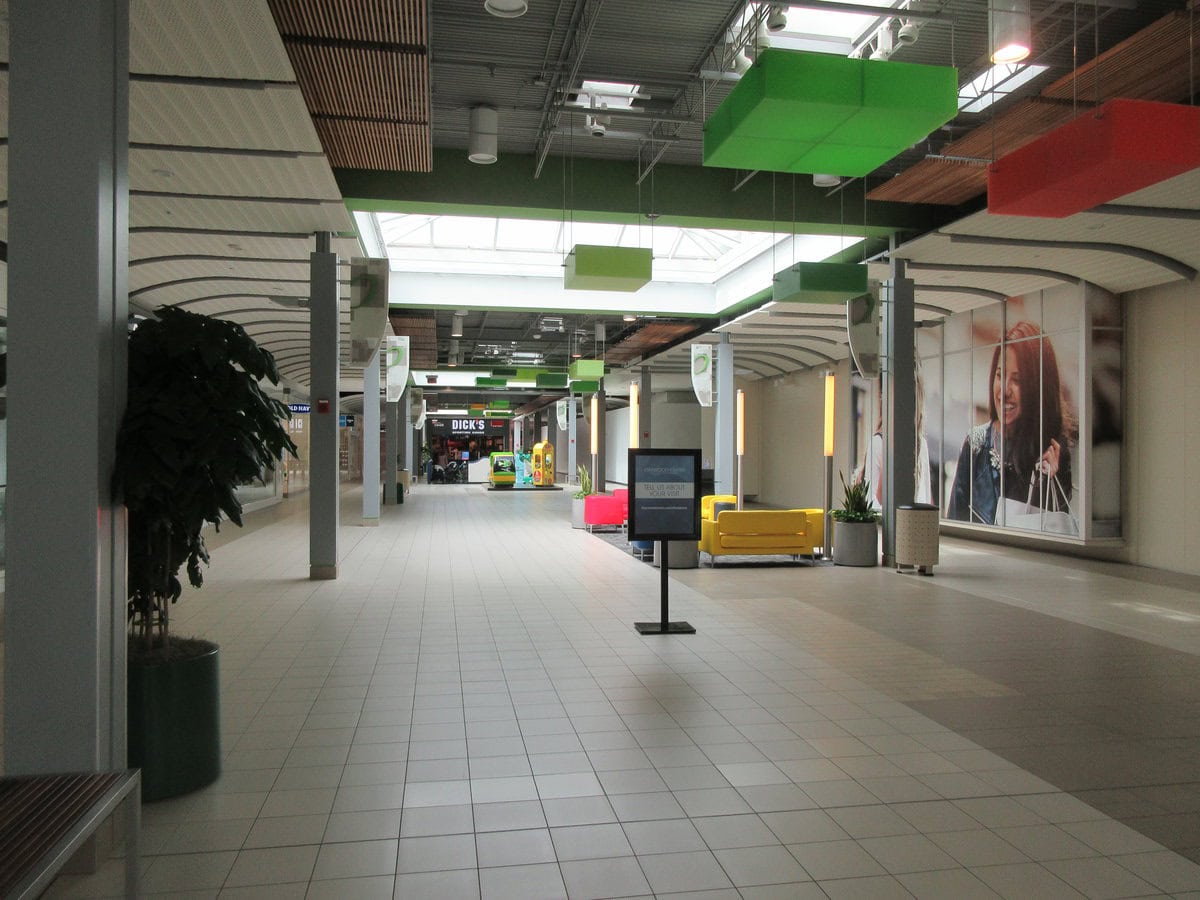The Mall Baton Rouge Grew Up With
Before trucks circled the old parking lot and loading bays carved through concrete, the place had a food court that sold corn dogs and cherry Icees.
Cortana Mall opened in 1976 and dropped right into the middle of Baton Rouge retail life as it had always belonged.
Every major name from Goudchaux's to JCPenney had a spot under its roof. Teenagers came to walk the loops. Holiday crowds packed the parking lots.
For people trying to figure out what happened to it or why it ended up torn down and replaced by steel racking systems, the full story starts here.
Launching the Retail Footprint in 1976
Cortana Mall opened in two phases, starting with Goudchaux's/Maison Blanche on February 16, 1976, followed by the mall itself on August 4 of that year.
Anchors moved in quickly.
JCPenney, Dillard's, and Sears joined the roster within months, along with a three-screen cinema run by General Cinema Corporation.
The final big-box name of that early stretch, H. J. Wilson Co., opened on October 17, 1977.
At 1.2 million square feet, Cortana was the largest shopping mall in the South when it opened.
That fact alone shaped how developers, shoppers, and competitors viewed the area.
It wasn't just large; it was positioned to draw from across Baton Rouge.
Later expansions added even more space, but the opening blueprint established the structure: big anchors, long concourses, and a layout that could feed steady traffic into every store.
People searching for things to do in Baton Rouge, Louisiana, in the late 1970s would have landed here.
Retail Layouts and Developer Ambitions
The original layout was built around the idea that scale alone could carry a property.
Cortana Mall stretched to 1.2 million square feet at launch, then added another 400,000 square feet by 1987.
The anchor footprint started with four and moved to six by the end of that expansion.
Mervyn's was the final name to enter, opening on July 17, 1987, after announcing plans in late 1986.
That same expansion wave brought in ten more inline tenants, which pushed the total count to around 140 stores.
Developer Mall Properties leaned hard into the model of large anchor magnets drawing foot traffic into smaller chains along the central walkways.
The entire site was single-story, apart from two-level anchor boxes.
The General Cinema three-screen theater lasted until 1988, when the lease wasn't renewed, giving up that space to a retail conversion.
Much of the mall's early architectural identity came from Milton J. Womack, who led the original design.
The choice to stick with low, flat structures across the entire floorplate allowed for clear interior sightlines and minimized build costs.
It wasn't flashy, but it fits a city still expanding outward from older shopping centers.
For a while, that practical approach worked.

Peak Occupancy and Commercial Volume
By the late 1980s, Cortana Mall had settled into a rhythm of high-volume foot traffic, anchored department stores, and steady lease turnovers among national brands.
At that point, the lineup included JCPenney, Sears, Dillard's, Goudchaux's/Maison Blanche, H. J. Wilson Co., and Mervyn's.
Inline tenant count remained high through the early 1990s, rarely dropping below 120.
The mall's anchor mix kept shifting. Service Merchandise acquired H. J. Wilson Co. in 1985 and rebranded its location.
After Service Merchandise folded in 2002, that anchor slot sat empty until Steve & Barry's opened in 2004.
Meanwhile, Goudchaux's had already gone through multiple changes: first to Maison Blanche/Goudchaux, then just Maison Blanche by 1988, and finally folded into Dillard's in 1998 after Mercantile Stores offloaded the brand.
The original Dillard's space didn't stay empty.
Saks Inc. took it and flipped it to Parisian in 1998, McRae's in 1999, and then Foley's in 2001 after a May Properties buyout.
Macy's stepped in by 2006 after acquiring Foley's.
Despite all those musical chairs among the anchors, inline tenants kept the lights on, at least until larger competitors started pulling market share in the next decade.
Market Pressure and Lease Attrition
By the time Cortana Mall rebranded in 1997 as "The Mall at Cortana," the signs were already there.
That same year, the Mall of Louisiana opened with a newer layout, updated design, and a different draw for regional shoppers.
In 2005, another hit came when Towne Center at Cedar Lodge opened three miles away.
Many retailers operating in both spots began pulling out of Cortana.
Lease renewals slipped. Foot traffic started trending downward.
The physical space didn't change much, but the commercial tenant mix shifted fast.
Storefronts that once housed national brands turned over to smaller local businesses or went dark entirely.
Even efforts in the 1990s to update interiors and signage, first in 1991, then again in 1997, couldn't stop the slowdown.
The pace of decline wasn't sudden, but it was steady.
Steve & Barry's closed in 2009 during the recession.
Virginia College took over that space briefly, opening a campus that lasted until the end of 2018.
The anchors shifted and shrank, and the inline tenants followed.
A retail center built for volume couldn't fill its square footage anymore.

Anchor Vacancies and Sale Listings
In 2016, Macy's confirmed it was leaving Cortana Mall.
That announcement marked the beginning of an exit wave.
Sears followed in January 2017, with plans to shut down in spring.
JCPenney announced its closure in March, giving a July 31 deadline.
Dillard's Clearance Center stayed longer but blocked off its mall entrance by December 2017 and closed entirely in April 2021.
At the start of 2017, there were still 48 operating stores.
That number dropped fast. By April 2018, about 40 remained. Within a year, over 90 percent of the available space sat empty.
The last commercial tenants left in mid-2019 after Moonbeam Equities ordered all occupants to vacate by September 15.
Even mall walkers, one of the last uses left, were turned away after September 3.
Moonbeam had listed the property for $4 million in August 2017, but there weren't many takers.
The offer came off the table in October 2018.
By then, the remaining activity inside came from a USPS branch, a Junior League distribution site, and a small clinic.
Bath & Body Works left by July 2019.
No new retail was coming in, and the demolition started to feel inevitable, even before the deal with Amazon landed.
Property Clearance and Demolition Timelines
By early 2021, the timeline had locked in. Dillard's Clearance Center announced its closure on January 11, with a projected exit by April.
That was the last retail holdout. Once Dillard's shut its doors, the mall had no open anchors and no inline tenants.
Everything left was either shuttered or scheduled for removal.
Demolition began on March 22, 2021.
No staged farewell or commemorative event, just equipment arriving on-site and tearing through the structure one slab at a time.
The job moved quickly. By late summer, the core-shell and anchor boxes were gone.
Even the steel framing didn't linger. What had once been 1.6 million square feet of commercial lease space was hauled off in sections.
Moonbeam Equities still owned much of the site at that point.
They had acquired it back in 2013 for $6 million, covering the inline portion and former Mervyn's space.
However, it was Amazon that became the next major player after a late 2019 property acquisition push.
By December 2021, redevelopment work had already started.
The footprint changed from commercial retail to logistics and warehousing.
Everything tied to the mall's old leasing model was gone.

Warehouse Redevelopment and Amazon Transition
Amazon finalized its deal for the property in late 2019.
That agreement included the main mall site, plus the former Macy's and Virginia College buildings.
By early 2022, groundwork and framing were underway.
No glossy renderings, no mall-style openings, just a new build focused on delivery logistics.
Baton Rouge has its largest single-site fulfillment facility.
The new structure totaled 3.4 million square feet, spread across multi-level racking and processing systems.
Amazon officially opened the center on August 1, 2024.
The development cost reached $200 million, backed by tax incentives and regional planning agreements.
At full operation, the facility created over 1,000 full-time jobs with advertised wages starting at $17.50 per hour.
Roles ranged from inbound receiving to outbound sortation, packaged under standard employment offers.
The Florida Corridor Master Plan, which covers the district that once held Cortana Mall, now includes the Amazon property.
The shift from a retail destination to a high-volume logistics hub aligned with city redevelopment plans through Build Baton Rouge and related agencies.
Local news outlets documented the transition in detail, tracing the handoff from declining retail leases to direct-to-door commerce.
Cortana Mall had become something else entirely. Its footprint still matters. The function just changed.
🍀







